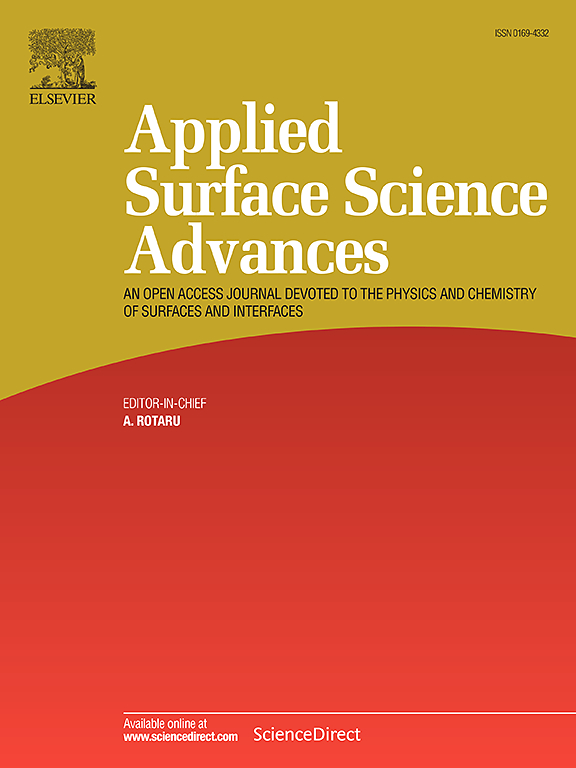Mechanistic study of oxidative chemical vapor deposition of polypyrrole: Effects of the inert gas and deposition time
IF 7.5
Q1 CHEMISTRY, PHYSICAL
引用次数: 0
Abstract
Oxidative chemical vapor deposition (oCVD) is a method for synthesizing uniform and conformal thin films of conductive polymers without any solvents. The structure and properties of oCVD films can be tuned by controlling the process parameters such as the flow rates of the vapor-phase reactants, substrate temperatures, chamber pressure, inert gas flow rate, and deposition time. Although the first three parameters have been studied, the impact of the last two remains as yet unexplored. This study examines how the flow rate of nitrogen gas, an inert gas that assists the oxidant delivered into the reactor chamber, and the deposition time affect the structure and properties of oCVD film. Polypyrrole (PPy) was chosen in this study due to its versatility for many applications. The results showed that nitrogen gas primarily acts as an oxidant carrier gas, impacting the distribution of the oxidant adsorbed onto the substrates. This leads to varying structure and properties of the resultant PPy. Furthermore, nitrogen flow rate and deposition time affect the thickness and conductivity of PPy differently. Increasing nitrogen flow rate significantly improves the distribution of the oxidant, but it can also result in excessive polaronic defects. These defects can severely deteriorate the polymeric structure and reduce the conductivity. Meanwhile, extending the deposition time increases the film thickness linearly due to longer reaction time and initially enhances conductivity until it reaches a plateau. These insights can be beneficial not only for the oCVD method but also for other types of vapor-based polymerization techniques.

聚吡咯氧化化学气相沉积的机理研究:惰性气体和沉积时间的影响
氧化化学气相沉积(oCVD)是一种在不需要任何溶剂的情况下合成导电聚合物均匀保形薄膜的方法。通过控制气相反应物流速、衬底温度、腔压、惰性气体流速和沉积时间等工艺参数,可以调节oCVD膜的结构和性能。虽然前三个参数已被研究,但后两个参数的影响仍未被探索。本研究考察了氮气(一种辅助氧化剂进入反应器室的惰性气体)的流速和沉积时间如何影响oCVD膜的结构和性能。本研究选择聚吡咯(PPy)是因为它具有多种用途。结果表明,氮气主要作为氧化剂载气,影响了氧化剂吸附在基质上的分布。这导致所得聚吡啶的结构和性能发生变化。氮气流速和沉积时间对PPy的厚度和电导率有不同的影响。增加氮气流量可以显著改善氧化剂的分布,但也会导致过多的极性缺陷。这些缺陷会严重破坏聚合物的结构,降低聚合物的导电性。同时,由于反应时间的延长,沉积时间的延长使薄膜厚度线性增加,并在初始阶段提高电导率,直至达到平稳期。这些见解不仅对oCVD方法有益,而且对其他类型的气相基聚合技术也有益。
本文章由计算机程序翻译,如有差异,请以英文原文为准。
求助全文
约1分钟内获得全文
求助全文

 求助内容:
求助内容: 应助结果提醒方式:
应助结果提醒方式:


